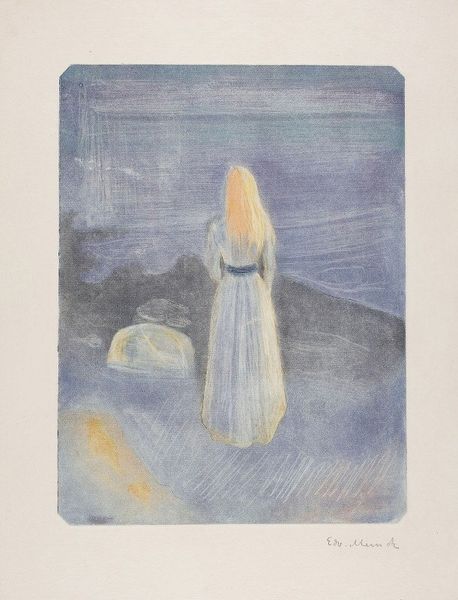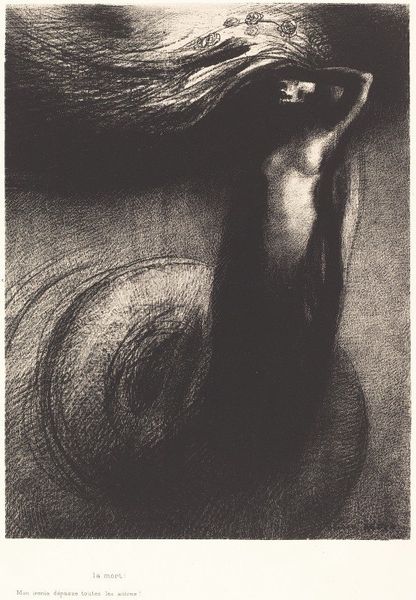
painting, watercolor
#
portrait
#
gouache
#
painting
#
landscape
#
figuration
#
oil painting
#
watercolor
#
symbolism
#
watercolour illustration
#
watercolor
Dimensions: 288 x 219 cm
Copyright: Public domain
Curator: Looking at Edvard Munch's "Young Woman on the Shore" from 1896, currently housed in the Munch Museum in Oslo. I’m instantly drawn into this world. There's this sense of a quiet, melancholy dream. How does it strike you? Editor: It feels like an anthem of isolation. A young woman with a cascade of auburn hair stands on the shoreline, her back to us. Her whiteness against the dark and brooding sea screams fragility. It evokes centuries of paintings portraying women as symbols, often without agency. Curator: That's a powerful take. For me, the symbolism is more subtle. Munch often wrestled with anxiety, grief, and mortality—these universal feelings are what make this piece resonate so deeply with viewers. I love how he uses gouache, watercolor, and oil paint to achieve this hazy, dreamlike effect. Editor: But can we really separate those feelings from the gendered expectations placed upon women in his era? The "madwoman" archetype, for example, heavily influenced portrayals of women artists in art history and still shapes societal perceptions of mental health today. Looking at it through that lens adds another layer to the piece, don't you think? Curator: Perhaps, but I think Munch is reaching for something beyond societal constructs. The young woman becomes a cipher for anyone grappling with loneliness. It's this very personal experience that feels so universal and lasting. The very idea of our personal anxieties being co-opted by history—that's rather frightening to ponder. Editor: Agreed, and looking at her vulnerability makes me reflect on power structures, not just those of the late 19th century, but still today. She might be turning her back to us, but we cannot turn our backs on what such images continue to tell us about identity, representation, and marginalization. Curator: It certainly offers ample scope for interpretation. I am also compelled by the fluidity of emotions. It’s fascinating to consider how a painting can embody multiple layers of meaning. Editor: And it’s these interpretations, challenged and affirmed across the years, that help us to challenge our current realities and make it the thought-provoking artwork we can engage with today.
Comments
No comments
Be the first to comment and join the conversation on the ultimate creative platform.













